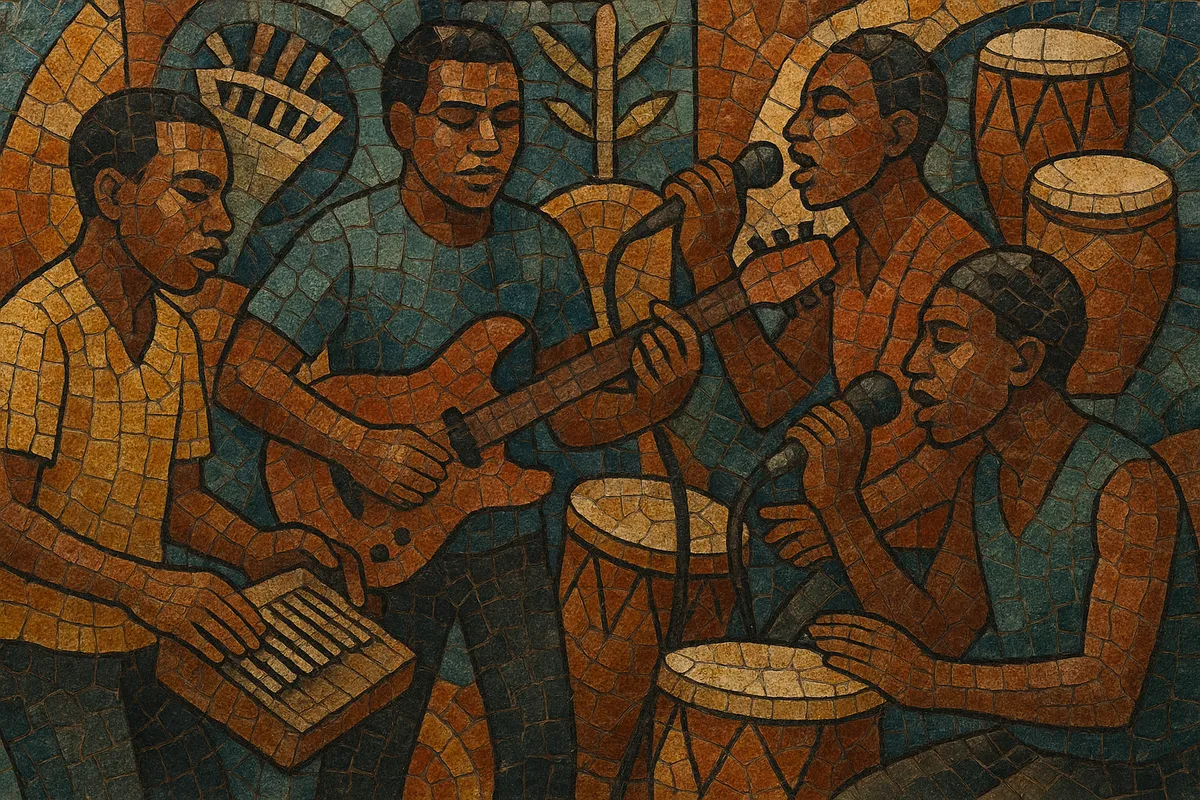Tradi-moderne congolais is a Congolese urban style that fuses village-based ritual and folk rhythms with modern amplification and band formats. It keeps core traditional elements such as cyclic polyrhythms, call-and-response singing, and indigenous instruments (likembe/thumb piano, lokole slit drums, ngoma hand drums), but presents them through electric pickups, DIY amplification, electric bass, and sometimes guitars.
Characterized by hypnotic ostinatos, gritty overdriven timbres, and long, dance-oriented grooves in 6/8 or 12/8, the music often employs non-equal-tempered tunings and layered percussion. Vocals are communal and antiphonal, carrying praise, social commentary, and urban folklore. The result feels both raw and contemporary: a buzzing, high-energy sound that bridges neighborhood sound-system culture and ancestral ceremony.
Groups in Kinshasa began electrifying traditional instruments in the 1960s as rural migrants adapted ceremonial repertoires to the city. Pioneers like the future members of Konono Nº1 retrofitted likembes with car alternator pickups and homemade amps, yielding the genre’s signature saturated, metallic timbre. While Congolese rumba and later soukous dominated airwaves, a parallel grassroots scene kept ethnic rhythms (Bazombo, Luba/Kasaï, Mongo, Kongo, Tetela, and others) alive in an amplified, dance-band format.
Through neighborhood fêtes, nganda bars, and outdoor sound systems, "tradi-moderne" became a living platform for modernized folklore. The setup remained practical and DIY: portable generators, megaphones, and rugged speakers. The emphasis was trance-like continuity—extended cycles, hand percussion choirs, and participatory call-and-response.
International releases and tours (often under the Congotronics banner) introduced the sound to global audiences. Konono Nº1, Kasai Allstars, and related ensembles showcased the style’s electrified likembe, polyrhythms, and communal vocals, influencing experimental, indie, and electronic artists worldwide. New acts such as Staff Benda Bilili, Jupiter & Okwess, Mbongwana Star, KOKOKO!, and Fulu Miziki expanded the palette with junkyard instruments, urban grooves, and post-punk/electronic textures.
Tradi-moderne congolais thrives as a flexible, collaborative approach rather than a single formula. Bands continue to blend local rhythms, street-level invention, and contemporary production, keeping the music intensely danceable while remaining rooted in community ritual and storytelling.


